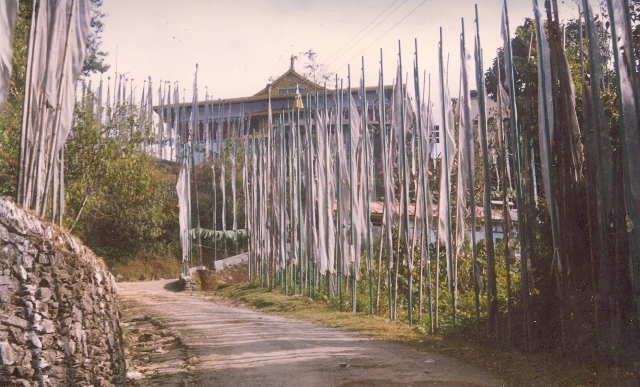Next weekend you can be at... Rabdanste
Do you want to spend a weekend exploring the ruins of an ancient palace atop a ridge in the shadows of the mighty Kanchenjungha? If you do, head for Rabdanste ? there?s no better getaway for those curious about history and passionate about geography.
Rabdanste was the seat of Sikkimese power for more than a hundred years, except for a brief period. Soon after being crowned in 1642, Phunstok Namgyal, the first Chogyal of Sikkim, had established his capital at Yuksum. His son Tensung, however, shifted the capital to Rabdanste.
In 1780, their descendant Tenzing ascended the throne. His reign was marked by the invasion of Sikkim by Nepal. Large chunks of the kingdom were ceded to the Nepalese and many residents were forced to flee to Lhasa.
The king of Nepal went on to capture parts of Tibet, which led to Chinese intervention and his eventual defeat. A Sino-Nepali treaty was signed and although Sikkim lost some of its land, the monarchy was restored.
Meanwhile, in Lhasa, Tenzing Namgyal died and his son Tsudphud returned to Rabdanste. He, however, considered the capital unsafe due to its proximity to the border and moved it to Tumlong, in north Sikkim. Today, the ancient palace of the Namgyals ? declared a monument of national importance ? lies in ruins on a ridge overlooking Pelling.
Rabdanste is just four km from Pelling and can be reached by foot. En route lies the Pemayangtse Monastery, one of the holiest sites in Sikkim. A short diversion, about two-and-a-half km from Pelling, will take you to the monastery. A long line of fluttering prayer flags will welcome you.
The three-storeyed monastery houses some wonderful paintings and other artwork. It also has a large collection of rare books. After a stopover at the monastery, hit the road again for Rabdanste. The motorable road soon gives way to a stone walking trail, followed by an ascent of 10 minutes.
The palace can be divided into two parts. The northern flank served as the residence of the royal family. Further north lies an open courtyard, with three chortens (stupas), where the members of the royal family used to offer prayers. The southern section was meant for the common people and is marked by the durbar, with its stone throne.
You can spend an entire morning exploring the ruins, which also offer a spectacular view of Kanchenjungha and the adjoining peaks.
On the trip back to Pelling, you can halt at Sangacheling Monastery, located on a hilltop overlooking the town. Although there is a motorable path to the monastery, it is best to follow the foot trail.
In about half-an-hour you should be at the monastery, one of the oldest in Sikkim. With some luck, you will be able to catch a glimpse of the Kanchenjungha from here too.
Going
Calcutta-Siliguri bus (Rs 215 approximately) or Howrah-New Jalpaiguri train (Rs 250 approximately). Jeeps are available from Siliguri to Pelling (Rs 130 approximately)
Staying
Pelling has a number of hotels for all budgets. There are also several restaurants
(METRO ON SUNDAY THANKS READER RANGAN DATTA FOR THIS CONTRIBUTION. PICTURE BY AUTHOR) |

